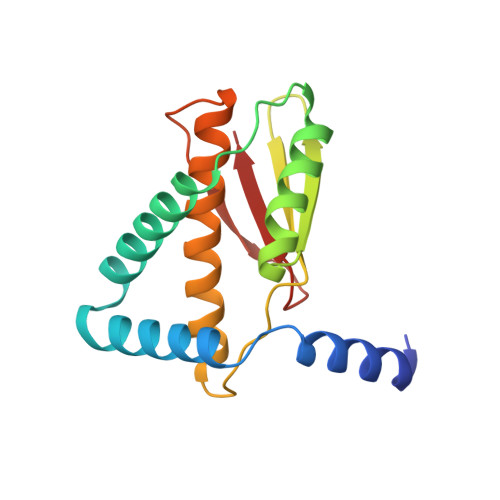Structures and roles of BcsD and partner scaffold proteins in proteobacterial cellulose secretion.
Sana, T.G., Notopoulou, A., Puygrenier, L., Decossas, M., Moreau, S., Carlier, A., Krasteva, P.V.(2024) Curr Biol 34: 106
- PubMed: 38141614
- DOI: https://doi.org/10.1016/j.cub.2023.11.057
- Primary Citation of Related Structures:
8PKD, 8POC, 8POG - PubMed Abstract:
Cellulose is the world's most abundant biopolymer, and similar to its role as a cell wall component in plants, it is a prevalent constituent of the extracellular matrix in bacterial biofilms. Although bacterial cellulose (BC) was first described in the 19 th century, it was only recently revealed that it is produced by several distinct types of Bcs secretion systems that feature multiple accessory subunits in addition to a catalytic BcsAB synthase tandem. We recently showed that crystalline cellulose secretion in the Gluconacetobacter genus (α-Proteobacteria) is driven by a supramolecular BcsH-BcsD scaffold-the "cortical belt"-which stabilizes the synthase nanoarrays through an unexpected inside-out mechanism for secretion system assembly. Interestingly, while bcsH is specific for Gluconacetobacter, bcsD homologs are widespread in Proteobacteria. Here, we examine BcsD homologs and their gene neighborhoods from several plant-colonizing β- and γ-Proteobacteria proposed to secrete a variety of non-crystalline and/or chemically modified cellulosic polymers. We provide structural and mechanistic evidence that through different quaternary structure assemblies BcsD acts with proline-rich BcsH, BcsP, or BcsO partners across the proteobacterial clade to form synthase-interacting intracellular scaffolds that, in turn, determine the biofilm strength and architecture in species with strikingly different physiology and secreted biopolymers.
- Université de Bordeaux, CNRS, Bordeaux INP, CBMN, UMR 5248, Pessac 33600, France; "Structural Biology of Biofilms" Group, European Institute of Chemistry and Biology (IECB), 2 Rue Robert Escarpit, Pessac 33600, France.
Organizational Affiliation:
















